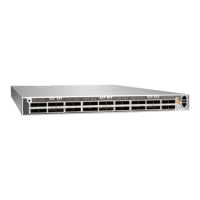How to Calculate Power Margin for Fiber-Opc Cables
Aer calculang a link's power budget, you can calculate the power margin (P
M
), which represents the
amount of power available aer subtracng aenuaon or link loss (LL) from the power budget (P
B
). A
worst-case esmate of P
M
assumes maximum LL:
P
M
= P
B
– LL
P
M
greater than zero indicates that the power budget is sucient to operate the receiver.
Factors that can cause link loss include higher-order mode losses, modal and chromac dispersion,
connectors, splices, and ber aenuaon. Table 31 on page 69 lists an esmated amount of loss for the
factors used in the following sample calculaons. For informaon about the actual amount of signal loss
caused by equipment and other factors, refer to vendor documentaon.
Table 31: Esmated Values for Factors Causing Link Loss
Link-Loss Factor Esmated Link-Loss Value
Higher-order mode losses Single mode—None
Mulmode—0.5 dB
Modal and chromac dispersion Single mode—None
Mulmode—None, if product of bandwidth and distance is less than 500 MHz-
km
Faulty connector 0.5 dB
Splice 0.5 dB
Fiber aenuaon Single mode—0.5 dB/km
Mulmode—1 dB/km
The following sample calculaon for a 2-km-long mulmode link with a power budget (P
B
) of 13 dB uses
the esmated values from Table 31 on page 69. This example calculates link loss (LL) as the sum of ber
aenuaon (2 km @ 1 dB/km, or 2 dB) and loss for ve connectors (0.5 dB per connector, or 2.5 dB) and
two splices (0.5 dB per splice, or 1 dB) as well as higher-order mode losses (0.5 dB). The power margin
(P
M
) is calculated as follows:
P
M
= P
B
– LL
69

